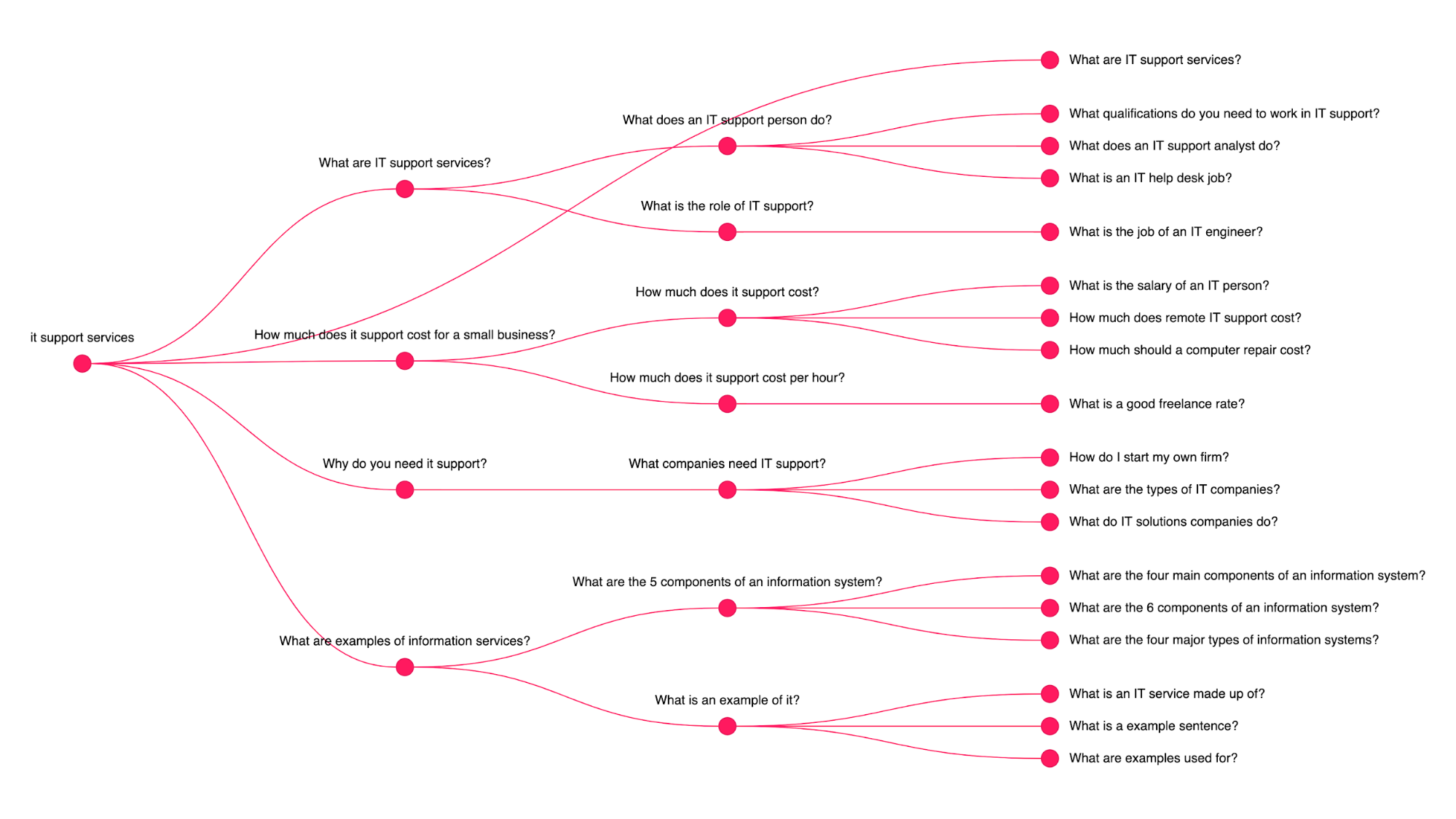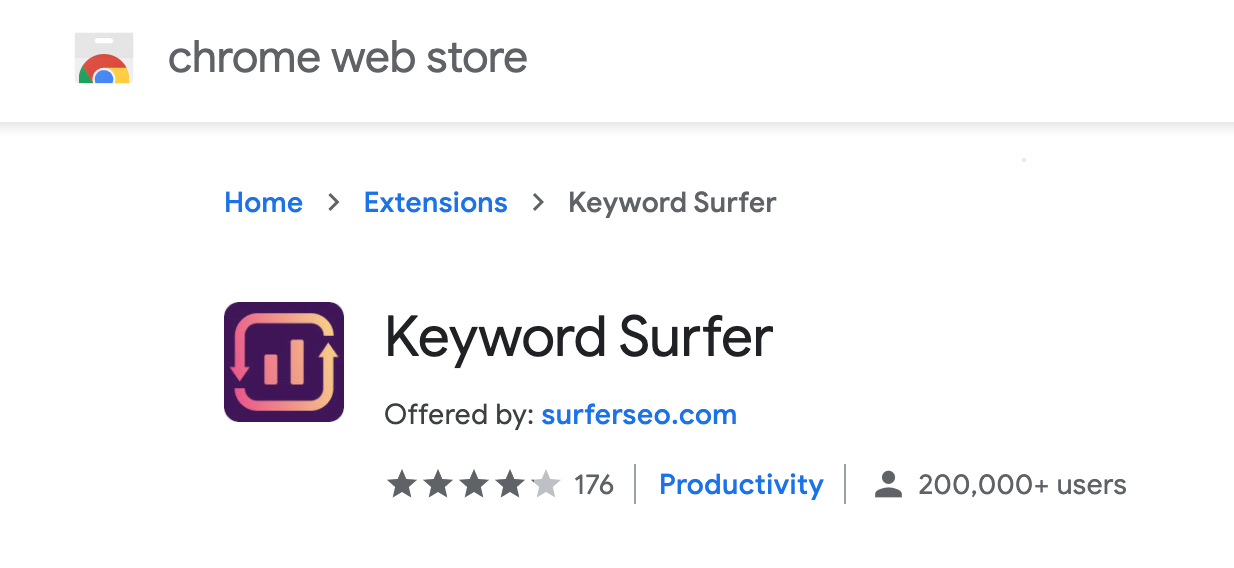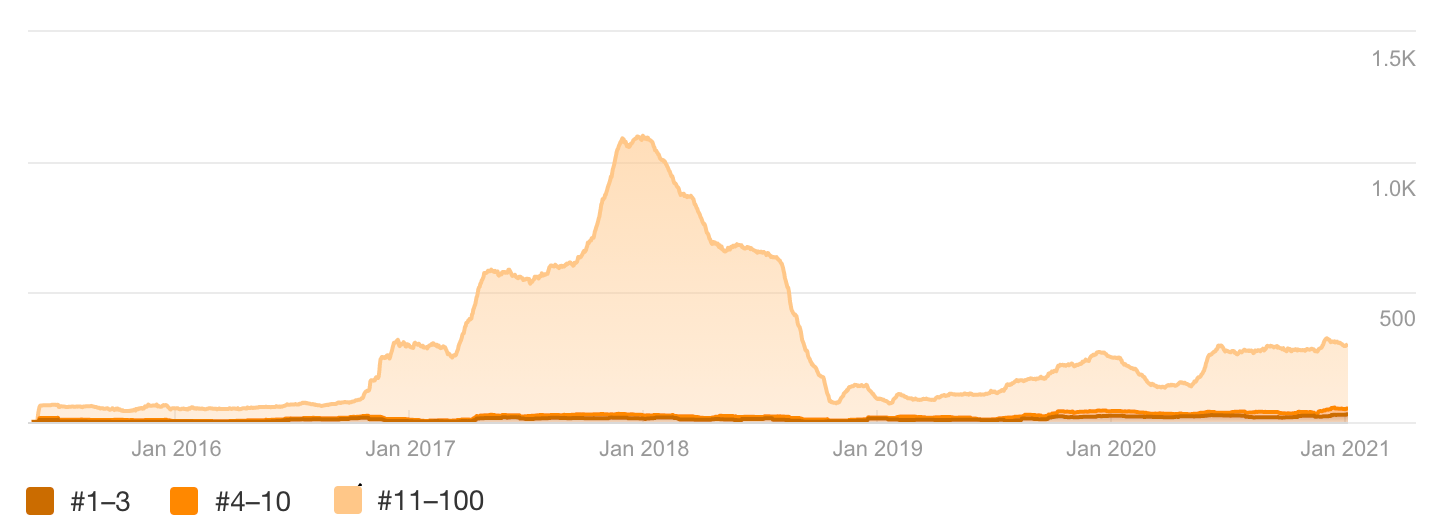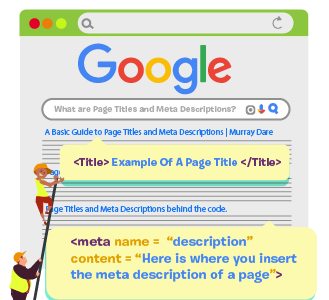This article is written to help businesses develop a deeper understanding of their SEO strategy. As a result, they can create content which is better aligned towards the intent of the user. As well as unlock the potential of lower volume keywords.
Often when we speak to potential clients or create competitor analysis reports we start with keywords. Specifically, those with a high search volume.
Because everyone is (naturally) seduced by keywords with search volumes in the thousands.

And appearing for these juicy, succulent high volume, long tail keywords is the main conversation we have with our clients. Especially when we first engage with new clients.
The conversation usually starts as follows:
Client: I want to rank for x so I will gain lots of traffic and make loads of money.
Of course, this makes perfect sense. And we would argue that most marketing agencies play into this logic, too. For instance, ‘I will get you to page 1 of google, without any qualifier as to how’ Sound familiar?
As mentioned, we titter on the edge of this rabbit hole every time we get started on a new SEO competitor report.
Beware Of Irresistible High Search Volumes
The key thing to understand is that if you focus on search terms which have the highest search volume, it can actually be detrimental.
Yet, these high search volume queries are close to irresistible when it comes to keyword research.
However, as we will investigate in this article, these super sexy high volume keywords should not be your sole focus. Especially when it comes to effective search engine optimisation. Because, lower volume keywords have a lot of untapped potential.
That said, a focus on short tail keywords often means that a content and seo strategy is oversimplified. Which may lead to clients thinking that they only need to invest in optimised landing page creation. As a result they may expect growth when there is much more to it than that.
Therefore, our goal here is to try to explain why long-tail keywords with a lower keyword volume is the better approach. Because utilising lower voume keywords really is a smarter strategy. And one which aligns your thinking closer to the goals of your customers. As opposed to the goals of your business.
We argue that the more you think about your position on these longer tailed, low volume keywords and create content to answer them. Then, the better aligned your business becomes. As a result, you move closer towards actually meeting that goal. Rather than simply projecting it and expecting everyone to realise it.
Deceptively Sexy Keywords
High search volume keywords aka Seed Keywords (1) and Medium-Tail Keywords (2) are usually parent terms.
More often than not, they link to lower levels of commercial intent.

For example, imagine you are a new-ish IT Support company based in Kent, near London.
It would be remiss of you to ignore the volumes of the following target keywords:
- IT Support
- IT Support Kent
For instance, ‘IT Support’ generates roughly 5.6K monthly searches.
And ‘IT Support Kent’ generates an average 100 monthly searches.
As such, you may want to get in on some of the keyword action from ‘IT Support’. However, for a new company, the keyword is way too competitive. As a result, to not focus on it is a no-brainer decision.
Whereas, ‘IT Support Kent’ also seems like a lost cause. Because the search volume looks extremely small and insignificant. So what do you do?
First, you need to work out who you want to target.
Who Exactly Are You Targeting?
Overall the keyword ‘IT Support’ is in use by multiple people. For instance, it could be needed by a family of four who are struggling to navigate the technical hurdles of homeschooling.
Equally, the keyword ‘IT Support’ could be required by a massive multi-branch enterprise-level company.
Not to mention, ‘IT Support’ is also an IT employment category. For example, an IT Manager may work in ‘IT Support’.
As such, this single keyword has very different and distinct audiences. Even though the search term easily applies to all.
In addition, one keyword could work for one IT Support company (regardless of the target market) and not for another.
Therefore, it can actually end up being a lazy and ineffective strategy to target the same keywords as your competition.
A far better approach is to research the entire keyword landscape. Then, compile a beefy list of possible keywords. And then narrow down your keyword list until you have a personalised SEO strategy built for your unique business.
This assumes that your business is unique, or at least wants to become unique.
I know this sounds blunt…But you won’t believe how many businesses talk about being unique. When in fact they are realistically as unique as vanilla flavoured ice cream.
Begin With Your Core Products & Services
The whole idea of SEO is to use your website to connect with people who are actively seeking you. Whether that’s your kind of services, expertise or products.
Your kind of services, expertise and products.
It may be a hard pill to swallow at this point. But it is better to assume that no one searches for your business.
In other words, no one cares about you.
The standard way to begin to improve your website is to look to your competition. Then, see what they are doing.
But we suggest a completely different initial step…
First, identify and define the core products and services that you offer. As well as those you want to be found for.
This is the real first step towards SEO that actually aligns to your business goals.
As a result it moves you towards the right types of content creation. That is, the content that obtains the valuable customers and leads you want.
For example, high commercial intent keywords have a far more defined intent.
Because these keywords provide a clearer idea of what a searcher is looking for.
Here are some examples of high commercial intent keywords:
- Buy
- Book
- Services
- Enquire
- Hire
- Hourly Rate
As such, let’s go back to our previous example; IT Support. In the context of IT Support, a high commercial intent keyword is ‘it support services’.

Because this search query has a much lower search volume (400) than the search query “it support” (5.6K).
However, the search intent is a lot clearer as people that use this search term want a specific service.
Cool!
So, we should target “it support services” then?
Woah! Not so fast.
We’ve gone from 5.6K monthly searches (it support) to 400 monthly searches (it support services).
However, and this is going to seem counterintuitive, we need to go look further at our keyword research. And this may very well lead to even slighter search volumes.
But diving deeper into keyword research will also help with your long-term content creation. Because with ‘it support services’ there are a whole range of questions which you can utilise in blog content.
And this is the kind of content that leads to better visibility within your target market. As well as increased authority in the eyes of Google.
Answer Your Potential Customers Questions

- Head to Answer The Public
- Type in the search term. In this case, “it support services”
And this is what we get…

Of course you can download an image similar to the one above. But we recommend you download the CSV list. Because it will be a whole lot easier to sort through the results.

Here’s a selection of search terms from the downloaded CSV:
- it support services for business
- it support services for small business
- it support services and computer maintenance proposal
- it support services for small business near me
- it support service level agreement
- it support services price list
- it support services proposal
- it support services pricing
- it service support process
Overall, it seems like there’s a lot. But we’re not done yet.
Let’s take a look at another tool: alsoasked.com.
Discover Questions That Your Potential Customers Also Asked

Similar to askthepublic.com in visual presentation, above and below are our results for ‘it support services’.

And just like with askthepublic.com, you can download a CSV file of the results.

Here is a selection of the commercial intent questions we received from alsoasked.com:
- How much does it support cost for a small business?
- How much does remote IT support cost?
- How much should a computer repair cost?
- How much does it support cost per hour?
Even More Research...Going Deeper Down the Rabbit Hole
Here is the combined list we from the results in answerthepublic.com and alsoasked.com:
- it support services for business
- it support services for small business
- it support services and computer maintenance proposal
- it support services for small business near me
- it support service level agreement
- it support services price list
- it support services proposal
- it support services pricing
- it service support process
- how much does it support cost for a small business?
- how much does remote IT support cost?
- how much should a computer repair cost?
- how much does it support cost per hour?
If you throw the majority of these search terms in an SEO tool like Semrush or Ahrefs, you will see that there are little to no search volumes.
However, that is not what we recommend you do at this stage. Next, it’s time to look at Google.
Getting Help From Good ‘Ol Google
Before you get Google’s help, we recommend you install the Keyword Surfer chrome extension.

Because this will allow you to see search volumes in Google.
For example, if we enter the search term “it support services for business” into Google, we can view the suggested search terms and their search volumes.

In doing so, we see that “it support services for business” has no searches per month. But the following search terms do (search volumes are shown in brackets):
- it support for small businesses (390)
- business it support (390)
- it support services near me (40)
- it services for small business (70)
- it support for small business london (320)
Overall, these 5 keywords have a total search volume of 1,210.
Most importantly, people that carry out these searches are more likely to be seeking the services we have to offer.
Even Deeper Keyword Research With Dedicated Tools
Next, we will take those 5 keywords and put them into either Semrush or Ahrefs (or both).
What we are looking for here are related keywords and questions.
First we will set some criteria.
As such, the keywords we will select must have a:
- Keyword Difficulty less than 20
- Maximum Volume of 1000 searches
- Word Count of at least 4 words
Cost Per Click of at least $1
Keyword Difficulty
Keywords that are ‘super easy’ or ‘pretty easy’ to rank for.
Maximum Volume
Search volumes less than 1000 ensure that we are closer to keywords that will have a high conversion rate. Because they are not general search terms.
Word Count
Keywords that contain more than words ensure they are long-tail keywords. As a result they will be more specific for our niche.
Cost Per Click
Keywords that advertisers are willing to pay at least $1 for.
Keyword Research Results
Let’s begin with the first keyword on our list that we have put through the criteria above.
- it support for small businesses
When we put this search term through our criteria there are 6 keywords with a total search volume of 1140. And an average CPC of $24.17.
| Keyword | Difficulty | Volume | CPC |
|---|---|---|---|
| small business it support | 0 | 600 | $20.00 |
| it support and services | 1 | 250 | $7.00 |
| it support for small business | 0 | 150 | $25.00 |
| small business i.t. solutions | 4 | 70 | $13.00 |
| it support for small businesses | 0 | 40 | $60.00 |
| it support small business | 0 | 30 | $20.00 |
In addition to our previous list we now have 11 keywords. With a combined total search volume of 2350 monthly searches.
Of course, we put the remaining keywords through this same process. And this is our final list of keywords:
| Keyword | Volume |
|---|---|
| small business it support | 600 |
| it support and services | 250 |
| managed it support services | 200 |
| it support for small business | 150 |
| small business it services | 100 |
| small business i.t. solutions | 70 |
| what is it support | 70 |
| business it support team | 50 |
| it support for small businesses | 40 |
| it support small business | 30 |
| it support for small businesses | 390 |
| business it support | 390 |
| it support services near me | 40 |
| it services for small business | 70 |
| it support for small business london | 320 |
Our Final Keyword List
Overall, we now have more keywords. The table above is now in addition to the initial keyword list below:
- it support services for business
- it support services for small business
- it support services and computer maintenance proposal
- it support services for small business near me
- it support service level agreement
- it support services price list
- it support services proposal
- it support services pricing
- it service support process
- how much does it support cost for a small business?
- how much does remote IT support cost?
- how much should a computer repair cost?
- how much does it support cost per hour?
So, now we have a good list of commercial intent keywords. As well as profitable search questions that can be used to create great content that attracts our ideal customers.
Let’s use this list to research the kind of content that already pleases our target market.
While there is absolutely no need to reinvent the wheel in terms of content. We can take a rickety, wooden wheel and develop it into a high-performance wheel good enough for F1 Motorsports.
Vroom vroom! Let’s go!
How To Conduct Profitable SEO Competitor Research
As mentioned above, we are not going to do any old kind of competitor research.
But we do need some profitable SEO competitor research.
The 6-Step Method:
- Find the content that ranks first (and possibly second) for all of our keywords
- Complete an Above-The-Fold analysis. And identify ways this content could be improved
- Do deeper research on the page and related domain. For example, how does it link to other articles? And what is the broader environment that the content falls within?
- Create a new piece of content
- Optimise that content for search engines AND readers
- Promote that content
Applying the 6-Step Method
Keyword: it support services for business
1. Page Ranking in The First Position
First position result on the first page of the search engine results pages for this keyword is: https://www.integral-it.co.uk/small-business-it-support
However, this is an inner (landing) page and not a homepage.
2. Above-The-Fold Analysis
Next let’s view the website from a website visitor perspective.
Yes, we will check for the overall design. But more importantly, we need to check a few things (see following image and table below):

| Great Element | Any Possible Improvements | |
|---|---|---|
| 1 | Primary Call-to-Action | Make the phone number in the header clickable. Provide another contact method for phone adverse people. |
| 2 | Welcome Headline | Could be optimised with a location |
| 3 | Supporting Text | Avoid platitudes and explicitly express the Unique Value Proposition that makes the business different |
| 4 | Primary Call-to-Action | Bit of overkill here as there is a CTA in a header and another one under this section. Use this (or the CTA underneath) as a secondary call-to-action. |
| 5 | Primary Call-to-Action | Same as above |
What’s Not So Great…
Overall, this landing page’s sole focus is on website visitors with a pretty high commercial intent.
And the page contains several ‘Primary Call-to-Actions’. Which intend to move people along a sales process towards a sale.
As such, we see phrases like:
- “Contact Us”
- “Let’s Talk”
- “Contact Us Now”
As a result, we know what will happen if we take up this offer.
We are mostly likely going to be sold to.
Which is not a problem if you are a user browsing the website with your bank card in hand. Or you are prepared to make an “imminent” purchase.
However, these types of website visitors are rare. In fact they make up less than 3% of the overall website traffic.
Think about it. When was the last time you visited a website for the first time and whipped out your bank card to make a purchase?
More often than not you are going to shop around. Even if you instinctively believe you have found the right solution.
You are still going to do your due diligence.
So what could be improved and applied to our website?
Overall, the biggest improvement that you could make to this page is to incorporate a “secondary call-to-action”. And this would be for the vast majority of website visitors who are seeking decision making information.
The business that provides this information helps the customer to make their decision. And is therefore coming from a far more authentic position than their competitors. Competitors who simply offer their services.
As such, a good idea would be to offer a short guide or PDF. Perhaps one that helps the website visitors in their decision making process.
For instance, how about…
“5 things to consider when buying IT Support”
Or even…
“3 Mistakes people make when buying IT Support”
Because if you’re in the market for info on IT Support services, that kind of content has value and is pretty useful.
After all, the visitor is likely to look at a few different suppliers before they make a decision. So if you can provide information which helps benchmark their decision. Then they are likely to consider you as better suited for their needs.
Also, you can ensure that to download the guide requires an email address. Therefore, you can capture their contact details to contact them afterwards.
If you also approach the creation of your guide in a smart way, then you can use this content as part of your overall content marketing strategy. It will help to rank you for many of the key questions outlined at the beginning of this article too.
3. Deeper Domain Research
Normally we go through a competitor analysis checklist. One that contains more than 25 different elements that allow us to extensively research:
- Organic Traffic
- Backlinks
- Paid Keywords
- Best Pages
- Outgoing links of any website
However, in this article we do a quick domain overview instead.
But if you would like to see an example of our competitor analysis, head over to this link.
Ok, so what can we find out about integral-it.co.uk? Let’s start with a quick domain overview.
Domain Overview
On the whole, here’s what we discovered:

Overall, they have:
- a pretty modest domain rating which is just 12 out of 100.
- 1,280 backlinks from 108 domains
- 300 organic keywords that generate 1,069 website visits (Jan 2021)
In addition, we can also see that they have only seen serious growth since December 2019.
And that’s when their traffic numbers reached triple figures.
Below we can see the “peaks and troughs” that eventually lead to their current organic traffic volume of 1,069 visits.

And it tells us that traffic is in part being brought in by 300 keywords (Jan 2021).
However, we can also see that this is basically a third of the keywords they once had.

Because back in January 2018, they had 1,093 keywords!
So, imagine you were an IT Support company looking to beat this particular company.
This initial data confirms that the strategic keyword research in this article would help you to blow them clean out of the water.
4. Creating your own content
First, the key thing to understand when you create content is that you are not trying to simply copy what your competitors are doing and slightly improve on it. But rather, you want to make something far superior which actually puts the customer first.
And there are two main reasons for this:
1. We want to answer the long-tailed questions customers “Google”
Overall, we want to be able to answer all of the smaller, more technical questions customers ask online.
We are not just answering to the visitor, we are asking you (the business) to be able to answer these points clearly and concisely. As a result, any potential customers will know exactly what to expect when they engage with you.
And if the content you are benchmarking against doesn’t answer any of those questions…well…then it provides you with the opportunity to actually stand out from the crowd.
But if we are unable to answer their questions? Then we’re not going to be able to rank for any of those target long-tailed phrases.
2. We want to be better than your competitors
If you copy your competitors content and seek to improve it, it will not be enough. Put simply, how much better do you actually expect your content to be?
Yet this is the strategy most companies (and marketing agencies) use when they approach content marketing.
Of course, the logic behind this action makes perfect sense:
- I want to rank for x
- This content is ranking for x
- Copy what x is doing but impove
- Therefore I will rank higher than x
And this is largely in part because this approach is easy (and we would argue lazy). Not just from the copywriter perspective but also from a company perspective.
In addition, we would argue that what we are trying to do here is create a game changer with your content. Which means it should naturally require more love, care and attention.
Because ultimately, your content should represent you. Therefore it must have a part of your company locked inside.
And if you want to rank highly, it should be because your content really deserves it. Because it is better.
Yes, it takes more time and effort to create something better which genuinely helps the user make a decision.
But that is precisely why the content will be better. Which in the long-term will help you to convert and to rank.
5. Optimising your content
After the process of content creation comes optimisation. However this means optimising it for both search engines and people. And this is key.
As such, make sure it is:
- Easy to read and organised to be easy to read
- Uses important phrases
- Optimised for on-page SEO
- Loads quickly
- Links to other pieces of content to encourage further user engagement
- Correct. For instance, make sure your contact form works
- Spell-checked and proofed
- Easy to measure downloads and clicks via Google Analytics or other similar analytics tools
- Indexable in its own right
Over time, you can start to measure page conversions and optimise the page accordingly.
Then, you can work to eventually improve the content. For example, an email series might be a valuable addition to an accompanying blog post.
6. Promote your content
When it comes to content in all forms, we don’t advise a ‘build it and they will come’ approach. Because there’s no point in a content marketing strategy without an idea of how you will promote it.
Once you have your content, be sure to promote it via:
- Social Media
- Email marketing
- Potential client outreach
- Additional articles (break your guide into blog format)
- Paid marketing – Google Ads / Facebook
In our experience, we do find that this is an area where most companies fall short. Because they build the web page and then expect people will automatically see it.
But the key to digital marketing is to think of promotion as a logical extension of content. As a result, it will maximise the effectiveness of your content.
Wrapping Up and Next Steps
Search engine optimisation can be a minefield for most business owners.
To create SEO content that actually moves the needle when it comes to increasing sales enquiries can be confusing and overwhelming.
But the key point is to answer the questions that your customers ask. Rather than simply tell people what you want them to hear. Or worse, repeat what the guy next to you said.
As a result, by focusing on longer-tailed keywords, but aligning your approach in a uniformed way which considers your competition, you can build targeted content. And you can capitalise on an untapped goldmine of potential with lower volume keywords. Which, ultimately, have a better chance to rank.
Especially when the competition is fierce and the market is saturated.
Speak to content marketing experts
If you are having trouble with your keywords or your content. Or if you want to understand how to best apply these principles (including lower volume keywords) to your own business. Then get in touch with us, your content marketing experts.
We are always happy to discuss what might be the best direction for your business. As well as how you can better utilise content marketing to maximise both your conversions in the short term. As well as your traffic in the long term.







